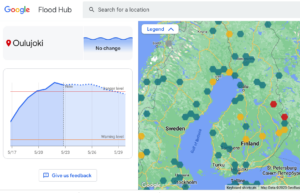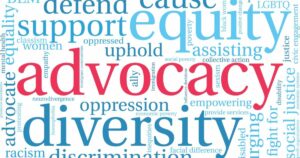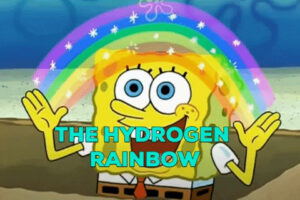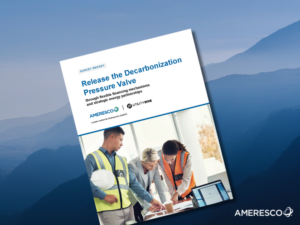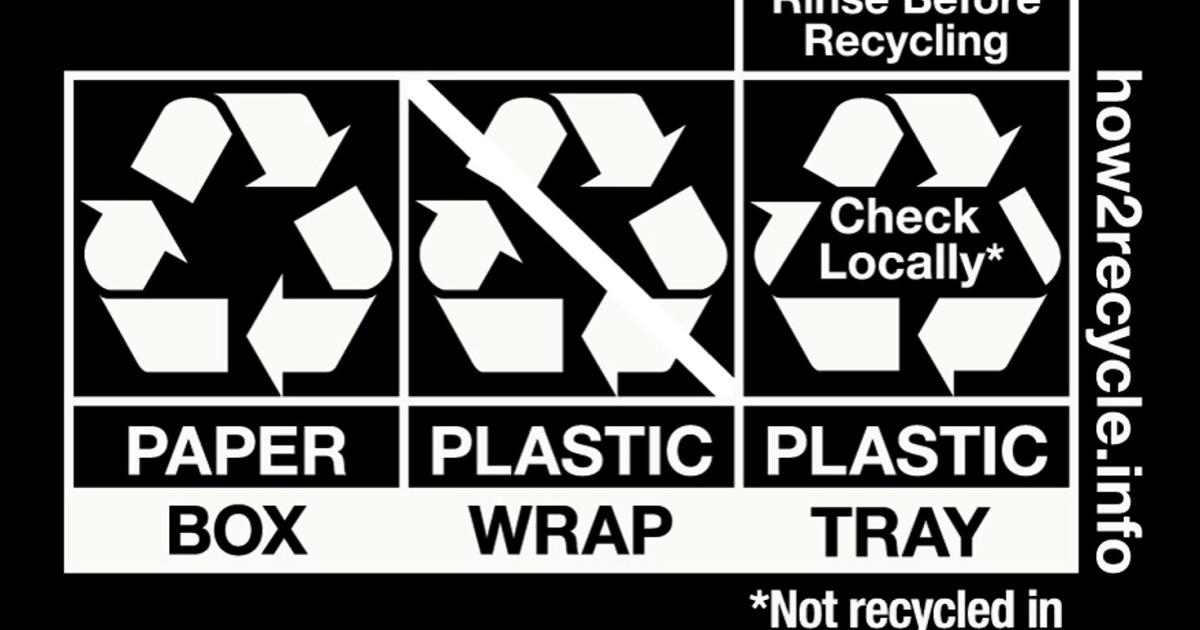
Eleven years ago, an ambitious new label, How2Recycle, emerged to make it easier for U.S. consumers to put their packaging in the right place at end-of-use. It offers better information than the alternatives, and it’s growing.
Yet in that time, recycling rates haven’t dramatically risen; many activists believe that recycling, especially for plastics, will never work; and other labels continue to confuse consumers and hamper recycling.
In this challenging context, what’s it like to swim upstream?
To find out, I sat down with Karen Hagerman, director of the How2Recycle program. The nonprofit GreenBlue originally rolled out How2Recycle (H2R) in 2012 “to get more materials in the recycling bin by taking the guesswork out of recycling.” Other than “a couple of one-offs,” no other nationwide system for labeling recyclable materials exists either in the U.S. or Canada, she said.
After more than a decade, the H2R label has grown from a pilot program to one with over 500 brand members including Coca-Cola, Clorox and General Mills, an additional 100 packaging manufacturers or non-brand members and tens of thousands of labels on packaging in the U.S. and Canada.
The improved information
How2Recycle has done a great job of developing a more detailed and helpful label for recyclability because, as the example below shows, it breaks down a package by component — such as paper box or plastic tray — with specific instructions for each.
It offers more and better information than non-standardized labels, such as the widespread chasing arrows symbol, which lacks the details to help you decide where to put a container — especially because the acceptance of certain materials, such as polypropylene, varies by region, ZIP code and in some cases, which hauler services your address.
The policy discussion
“One really hot topic with the How2Recycle label, our membership and just recyclability in general is all the movement on policy to regulate recyclability messaging,” she said, referring to California’s S.B. 343 truth in labeling law coming into effect in 2024. “It’s really challenging because as we see that occur, (we’re) operating at a national scale, so figuring out how to adapt to the different states while still communicating to a national market is complex.”
Backing up, How2Recycle is founded on both the U.S. Federal Trade Commission (FTC) Green Guides and the Canadian Competition Bureau’s Environmental Claims and Greenwashing guidance.
Hagerman described how H2R’s recyclability claims are based on five pillars:
- Compliance with applicable law
- Recycling access for the specific material for at least 60 percent of households, a threshold outlined in the Green Guides
- Technical sortation of materials
- Re-processability of the material
- The existence of an end market for the material
The challenging environment
To offer context for the environment in which the H2R label operates, I looked at the EPA’s most recent data about recycling rates, which is five years old. Recycling rates for packaging overall have risen from 38 percent to 54 percent between 2000 and 2018. But plastics recycling has barely budged, from 9 percent to 14 percent; it has remained at 14 percent between 2010 and 2018. Aluminum recycling, meanwhile, has fallen from 44 percent to 35 percent.
It doesn’t seem like we’re moving the needle at all. Why not?
As for these trends, according to Hagerman, even where materials are collected and sorted, the data about what recycled raw material feeds back into new products is tough to come by.
In addition, the privatized system in the U.S. for collection, sorting and recycling leaves gaps. “The data exists,” Hagerman said, “but it exists in such a fragmented way.”
“I mean, I would love data on the effectiveness of the How2Recycle label,” she added. “I would love to do bale audits and see: Does our label sort correctly? Are consumers actually following the instructions? Is material making it to the right place? What percentage of the cardboard bale has the How2Recycle label on it?
“Those are things we’re looking into and we’re trying to increase our capacity and resources to be able to get that data, because at the end of the day I want to be able to tell businesses and consumers that yes, this label is effective at increasing the quality and quantity in the recycling system. That’s our mission.”
My takeaway is that you can only improve what you measure, and in the case of recycling, we are not doing a great job of measuring.
What can we learn from all this? Recycling is a systems issue. We can improve packaging design, labeling, collection and recycling infrastructure independently, but without linking them all together and creating end markets, it’ll be difficult to make headway.
- SEO Powered Content & PR Distribution. Get Amplified Today.
- PlatoData.Network Vertical Generative Ai. Empower Yourself. Access Here.
- PlatoAiStream. Web3 Intelligence. Knowledge Amplified. Access Here.
- PlatoESG. Carbon, CleanTech, Energy, Environment, Solar, Waste Management. Access Here.
- PlatoHealth. Biotech and Clinical Trials Intelligence. Access Here.
- Source: https://www.greenbiz.com/article/how2recycle-label-does-so-much-right-why-are-recycling-rates-so-low
- :has
- :is
- :not
- :where
- $UP
- 100
- 14
- 2000
- 2010
- 2012
- 2018
- 2024
- 35 percent
- 35%
- 500
- 54
- 60
- 9
- a
- Able
- About
- acceptance
- access
- According
- activists
- actually
- adapt
- added
- addition
- Additional
- address
- ago
- All
- alternatives
- ambitious
- an
- and
- applicable
- ARE
- AS
- At
- audits
- b
- back
- based
- BE
- because
- believe
- below
- Better
- between
- BIN
- both
- Box
- brand
- breaks
- businesses
- but
- by
- CAN
- Canada
- Canadian
- Capacity
- case
- cases
- certain
- challenging
- claims
- coca-cola
- code
- collection
- come
- coming
- commission
- communicating
- competition
- complex
- component
- Consumers
- Container
- context
- continue
- correctly
- Couple
- Creating
- data
- day
- decade
- decide
- described
- Design
- detailed
- details
- developing
- different
- difficult
- Director
- do
- does
- doesn
- doing
- done
- down
- dramatically
- each
- easier
- effect
- Effective
- effectiveness
- either
- emerged
- end
- Environment
- especially
- Ether (ETH)
- Even
- example
- exists
- Fallen
- Find
- five
- following
- For
- Founded
- fragmented
- from
- FTC
- gaps
- General
- General Mills
- get
- great
- Green
- Growing
- Have
- help
- helpful
- HOT
- households
- How
- How To
- HTTPS
- i
- improve
- improved
- in
- Including
- Increase
- increasing
- independently
- information
- Infrastructure
- instructions
- into
- issue
- IT
- Job
- jpg
- just
- karen
- Label
- labeling
- Labels
- Law
- LEARN
- least
- like
- linking
- looked
- looking
- love
- Low
- make
- Making
- Manufacturers
- many
- Market
- Markets
- material
- materials
- mean
- Meanwhile
- measure
- measuring
- Members
- membership
- messaging
- Mission
- more
- most
- movement
- moving
- much
- National
- Nationwide
- never
- New
- new products
- no
- Nonprofit
- occur
- of
- offer
- Offers
- Old
- on
- ONE
- only
- operates
- operating
- or
- originally
- Other
- our
- out
- over
- overall
- package
- packaging
- Paper
- percent
- percentage
- pillars
- pilot
- Place
- plastic
- plastics
- plato
- Plato Data Intelligence
- PlatoData
- policy
- Products
- Program
- put
- quality
- quantity
- Rates
- Raw
- RE
- really
- recent
- recycling
- region
- Regulate
- remained
- Resources
- right
- Risen
- Rolled
- s
- Said
- Scale
- see
- seem
- Services
- she
- Shows
- So
- some
- specific
- States
- Still
- such
- symbol
- system
- Systems
- T
- taking
- tell
- tens
- than
- that
- The
- their
- Them
- These
- things
- this
- those
- thousands
- time
- to
- together
- topic
- tough
- trade
- Trends
- truth
- trying
- u.s.
- want
- Way..
- we
- What
- which
- while
- why
- widespread
- will
- with
- without
- Work
- would
- years
- yes
- you
- Your
- zephyrnet
- Zip

